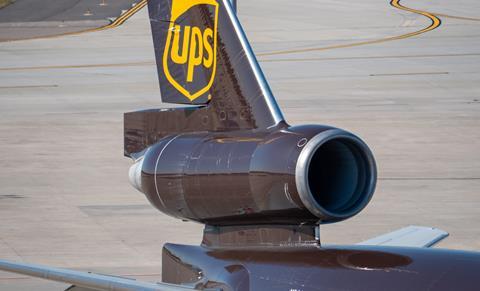Older freighters are being grounded as a result of ongoing reduced demand and increased capacity in the air cargo sector, according to Sander Schuringa, manager of market intelligence at Seabury Cargo.
Speaking at the IATA World Cargo Symposium in Istanbul, Schuringa said that as a result of falling demand and increased capacity, yields and freighter utilisation have dropped. Older freighters tend to be more expensive to operate and are therefore taken out of operation first when margins are squeezed by lower market rates.
“What we see now, is that older freighters are being grounded in relatively greater numbers than younger aircraft,” he said during the event’s opening plenary.
Comparing the first quarter of 2023 to the same three months of 2022, Seabury data shows that in terms of widebody international air cargo capacity utilisation, the Boeing 777-200LRF is up 6% year on year, while the Boeing 747-8F is up by 5%. But there has been a capacity utilisation drop for older freighter aircraft of 43% for the MD-11 and 18% for the Boeing 747-400.

In terms of the overall market, Seabury Cargo says air cargo demand has significantly declined for more than a year, while cargo capacity continues to tick upwards.
“As a result of falling ocean cargo yields, we not only see that certain products are shifting towards ocean, but we also see that air cargo yields are further being eroded,” says Schuringa.
In the first quarter of last year there was moderate air cargo growth of almost 5%. But the first signs of decline became visible at that time and continued throughout the year, with Asia suffering in particular.
“If we compare the data from January this year, it’s fair to say that the changes have been quite dramatic in terms of accountability for the decline.
“All trade lanes that are either starting or ending in Asia have all seen quite a dramatic decline at the start of this year compared to the start of last year.”
This also applies to intra-Asia, he says.
“Recovery in the Asia Pacific region has been quite modest while the rest of the world’s recovery has been progressive,” says Schuringa.
Adding to an already mixed outlook for air cargo, he warns that the decline in demand is not a correction to pre-pandemic levels.
“If you look at the 13% decline [in demand] from the record month of January 2022, unfortunately our data shows that January this year has fallen back to pre-pandemic 2017 levels.
“That means that the anticipated recovery will likely take a little bit longer.”
The fashion, chemicals, pharma, raw materials, high-technology and automotive industries are largely responsible for the demand decline and shift back to ocean, explains Schuringa.
Rebecca Jeffrey is the deputy editor of Air Cargo News


























